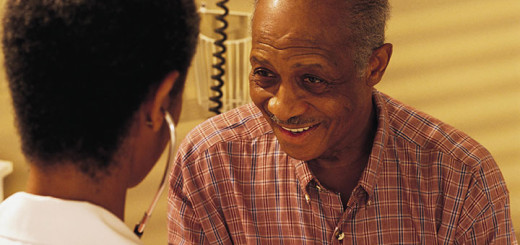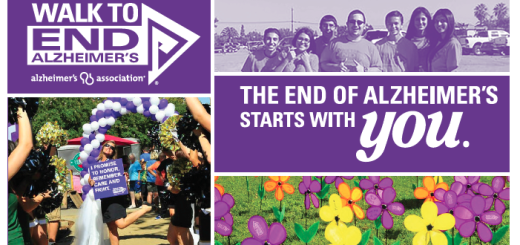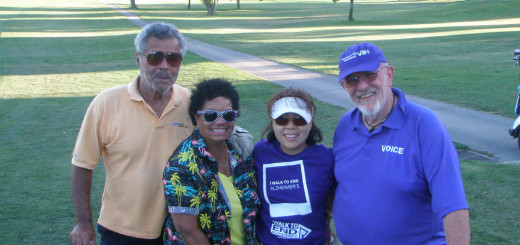American Society on Aging conference provides motivation to support the HOPE act
Do you think everyone is asleep at the wheel? Well, I do too, sometimes”¦ but not this week! This week I encountered nearly four thousand people who gathered at the annual conference for the American Society on Aging in San Francisco.
I was there to present a workshop on “Planning for Alzheimer’s Disease in California From the Ground Up,” along with wonderful colleagues Freddi Segal-Gidan, Jackie McGrath and Liz Schwarte. It was our opportunity to share our experience in developing California’s Alzheimer’s Disease State Plan to an interested audience from around the globe.
The highlight for me, however, was the general session entitled “We must Stop Alzheimer’s by 2020: the Need for a New Era of Geri-activisim.” I wish you all could have heard the inspiring speakers Meryl Comer, Ken Dychtwald, Harry Johns and Stanley Prusiner. With humor and insight, as well as wrenching stories of personal caregiving, we heard – yet again – all of those frightening statistics. Statistics that are staggering, quotes that are so true, no matter how many times we repeat them:
- Alzheimer’s disease is the single greatest challenge facing an aging America.
- By 2050, the cumulative cost of Alzheimer’s will be $20 Trillion (that’s not a typo, folks).
- For every dollar we spend on care, we spend one-third of a penny on finding a cure.
- 15 million caregivers spend 17 billion hours of unpaid care for their loved ones. If we were to combine all of these caregivers in one place, it would be the fifth largest state in the country. If we include persons with Alzheimer’s, it would be the 3rd largest state.
- Someone with Alzheimer’s costs Medicare 3 times more than someone without the disease, and 9 times more for Medicaid (Medi-Cal in California).
- The biggest obstacle in finding a cure is the lack of sustained funding. NIH spends $6 billion on cancer research, $4 billion on cardiovascular disease research, $3 billion in HIV/AIDS research, yet only $400 million in Alzheimer’s research. Yet of all of these, Alzheimer’s is the only disease where the change in number of deaths is going up, not down.
We simply have to make elected officials understand that not funding Alzheimer’s research will be a political and moral liability. In past decades, we’ve achieved remarkable things – just remember how devastating polio used to be. With commitment, leadership, research and a sense of real urgency, the disease was eradicated. We need that same kind of urgent commitment and leadership now.
At the national level, we measure progress by such steps as the passage earlier this year of NAPA (the National Alzheimer’s Project Act). Now, we have another opportunity: Recently, the Health Outcomes, Planning, and Education (HOPE) for Alzheimer’s Act (S. 738/H.R.1386) was reintroduced in the 112th Congress. Passage of this bipartisan legislation would improve care and outcomes for people with Alzheimer’s disease by improving diagnosis, care planning, and medical record documentation. We need this bill to pass in order to put “teeth” around the required mandates of NAPA to accelerate treatment developments, decreasing disparities, improving early diagnosis, coordination of care, and treatment.
Won’t you spend a minute to articulate your support? Please go to www.alz.org and send a note to your elected official in Congress! Thank you!


















“Age is, after all, the one thing we all share.” –Maggie Kuhn
I support the HOPE act.
What’s the difference beweetn forgetting things and early signs of Alzheimer’s disease?Some loss in memory function is an inevitable consequence of aging. Eighty percent of seniors complain of some memory trouble. As we age, it takes more time to process information and retrieve memories. The ability to remember a name, where we put the keys, whether we locked the door, missed one item from a 10-item shopping list, etc., is called ‘benign forgetfulness of aging.’ These episodes are usually infrequent, and relate to stress, anxiety, being very busy or not being well rested. These individuals don’t have difficulty with reasoning and problem solving and these episodes don’t affect day-to-day functioning.Memory issues of Alzheimer’s affect a person’s ability to function over time. The patient with Alzheimer’s has trouble with short-term memory and becomes unable to learn new information. It’s simply gone and cannot be retrieved. Episodes occur frequently and interfere with social and work function. We hardly ever see Alzheimer’s patients in stages 2 and 3 because they often don’t have enough symptoms to seek treatment.The Alzheimer’s patient in stages 4-7 forgets they made a list. They may forget how to get home. They may forget that family looked for them for eight hours before finding them. These patients also have problems with calculations and complex brain functions. Balancing a checkbook would be impossible at stage 4.I hope this helps you some.